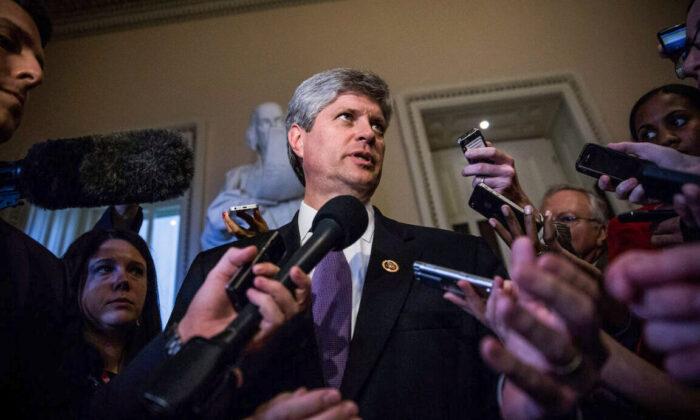U.S. B-52 bombers flew over a country that borders Ukraine, the U.S. military announced March 4.
The B-52 Stratofortress aircraft conducted a long-range “integration flight,” according to U.S. Air Forces in Europe and Africa.
The bombers took off from a base in England and headed to Germany to conduct an exercise alongside U.S. and German troops known as joint terminal attack controllers, who call strikes down from forward positions in the field.
The training mission included training in conjunction with Romania, a NATO ally that shares a border with Ukraine.
The exercises “give us a critical opportunity to integrate and train with our allies and partners, especially during this difficult time,” Gen. Jeff Harrigian, commander of U.S. Air Forces in Europe and Africa and NATO’s Allied Air Command, said in a statement.
“Training together ensures the defensive power of NATO remains unmatched,” he added.
Russia invaded Ukraine, which is not in NATO, on Feb. 24, and fighting has continued in the country since then.
According to the Air Force, the Stratofortress is a long-range bomber that can fly at “high subsonic speeds at altitudes of up to 50,000 feet” and can carry nuclear or conventional bombs.
In a conflict, the military says, the B-52 “can perform strategic attack, close-air support, air interdiction, offensive counter-air, and maritime operations.”
Ukraine’s President Volodymyr Zelensky and other Ukrainian officials have repeatedly called on NATO to impose a no-fly zone over Ukraine, which would likely lead to U.S.-Russia battles in the air.
Zelensky later criticized NATO, alleging the alliance’s members “want to continue” the “harsh war” by making the decision “not to close the airspace in Ukraine.”
“We believe that NATO member states have created themselves a narrative that the closure of the airspace in Ukraine would provoke direct aggression from Russia against NATO. It’s self-induced hypnosis of those who are weak and lack confidence, even though they can possess arms stronger than ours,” he said in Kyiv, adding, “All the people who die from this day forward will also die because of you, because of your weakness, because of your lack of unity.”
U.S. military spokesman John Kirby, meanwhile, said during a briefing Friday that U.S. officials and Russian counterparts had established a “deconfliction line” amid the war.
“We think it’s valuable to have a direct communication vehicle ... to reduce the risks of miscalculation,” Kirby told reporters in Washington,“ and to be able to communicate in real time if need be, particularly because now the airspace over Ukraine is contested by both Russian and Ukrainian aircraft, so that contested airspace now buttresses right up against NATO. Smart thing to do, and we’re glad it’s in place, we’re glad that the Russians have acknowledged that they will use it.”





